Project Overview
I joined a young content strategy team at a large financial services firm that didn’t have any documentation around error message standards. Creating and delivering the first guidelines for error message strategy was identified as a UX priority in the fall of 2023.
The project scope included auditing existing error messages in my product space, independent research on UX best practices, and collaborating with other internal teams, such as brand and behavioral research, to deliver tailored guidelines that reflect the firm’s brand. The project took place from November 2023 to March 2024.
The audience
The Error Message Guidelines were written for any content-producing UX roles within the firm — product owners, business analysts, designers, and content strategists.
My role
Leading development and writing all drafts of the guidelines
Auditing the firm’s current error messages for content and use cases
Researching and providing examples of UX best practices in error messaging
Engaging with the Behavioral Science and Brand Standards teams to ensure guidelines incorporate internal research and best practices
Socializing the guidelines among the six other content strategists and the content team lead; soliciting feedback and making changes
Publishing the guidelines to the firm’s internal design system site
Error Message Guidelines
Research & Content Strategy
Below is a copy of the final Error Message Guidelines produced for the client. Please note that the document has been scrubbed to remove all mentions of the client name, including any identifying example images or links.
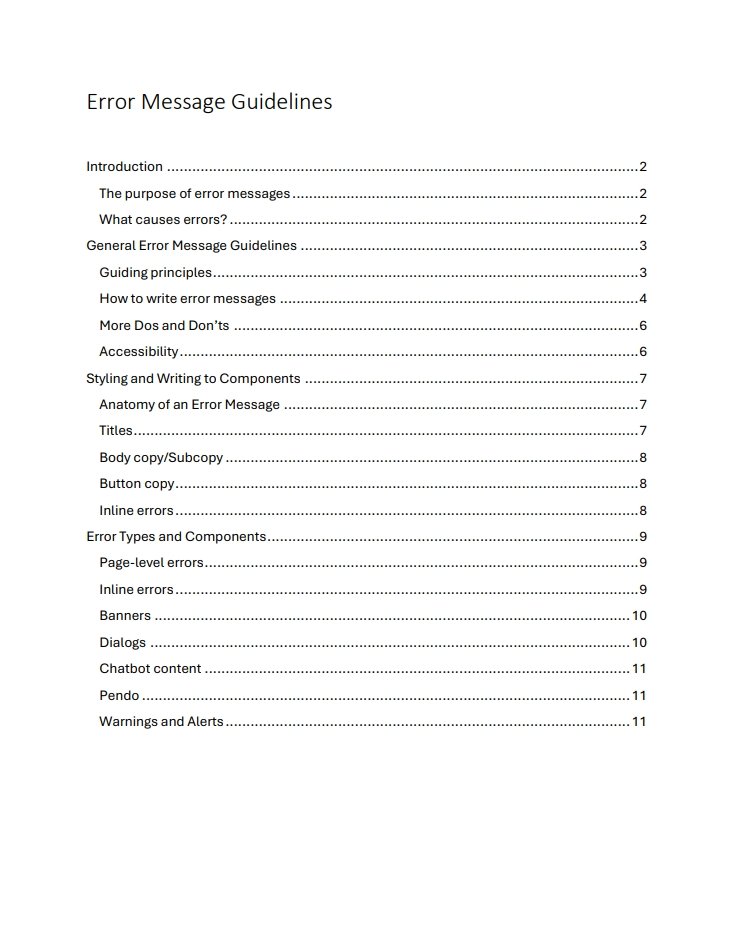
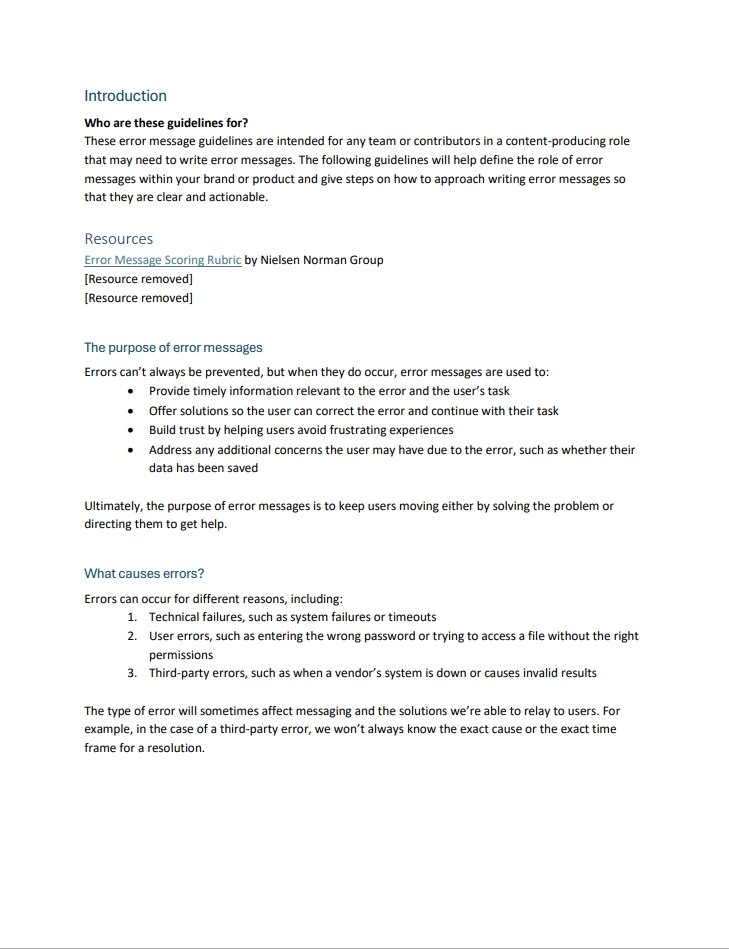
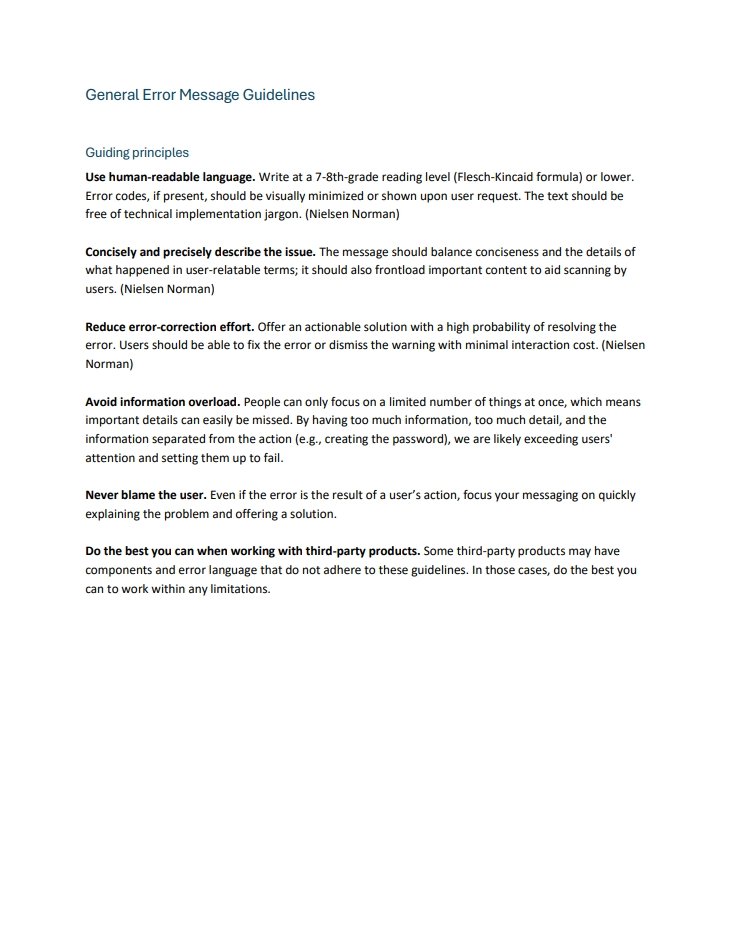
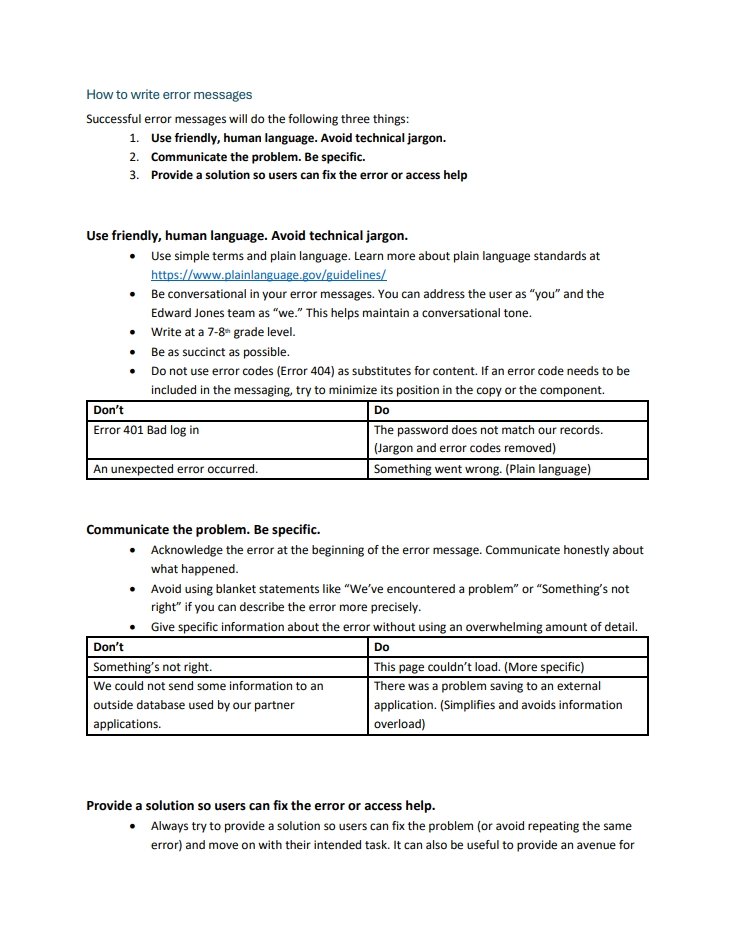
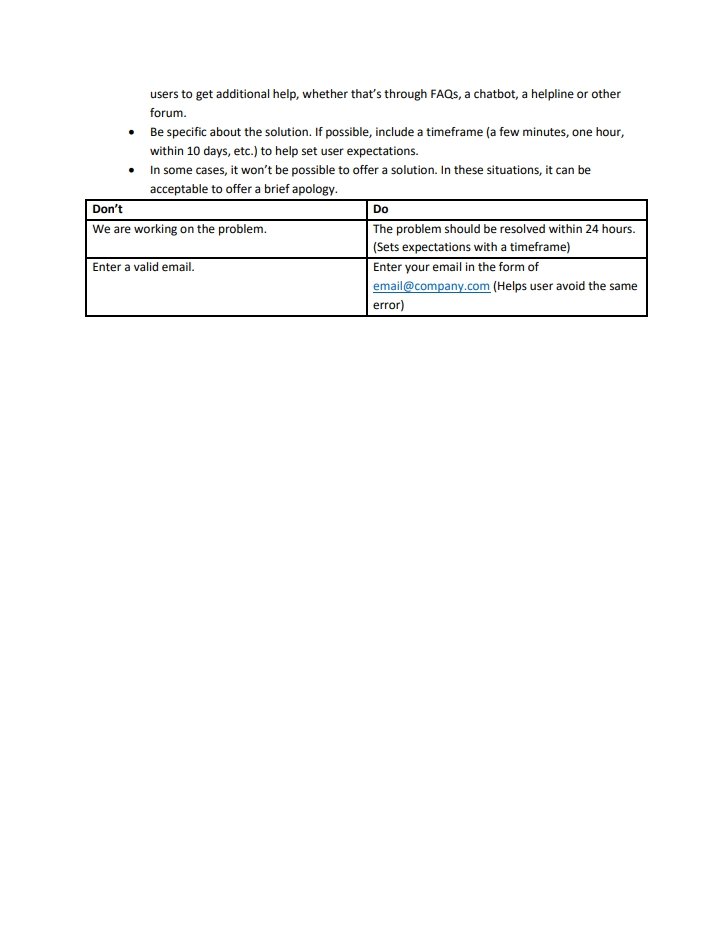
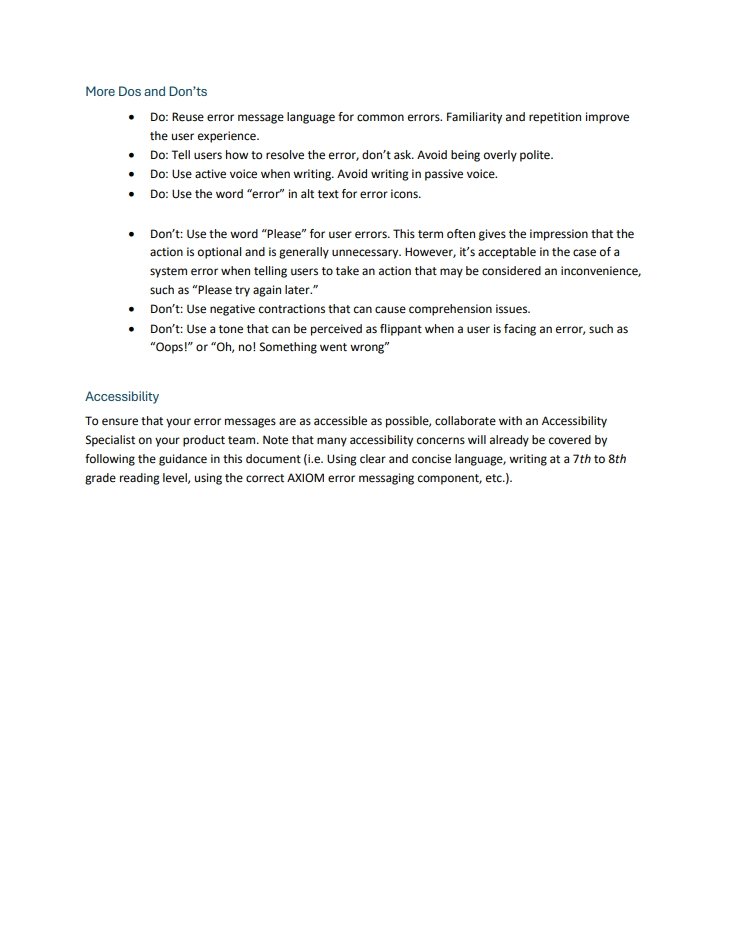
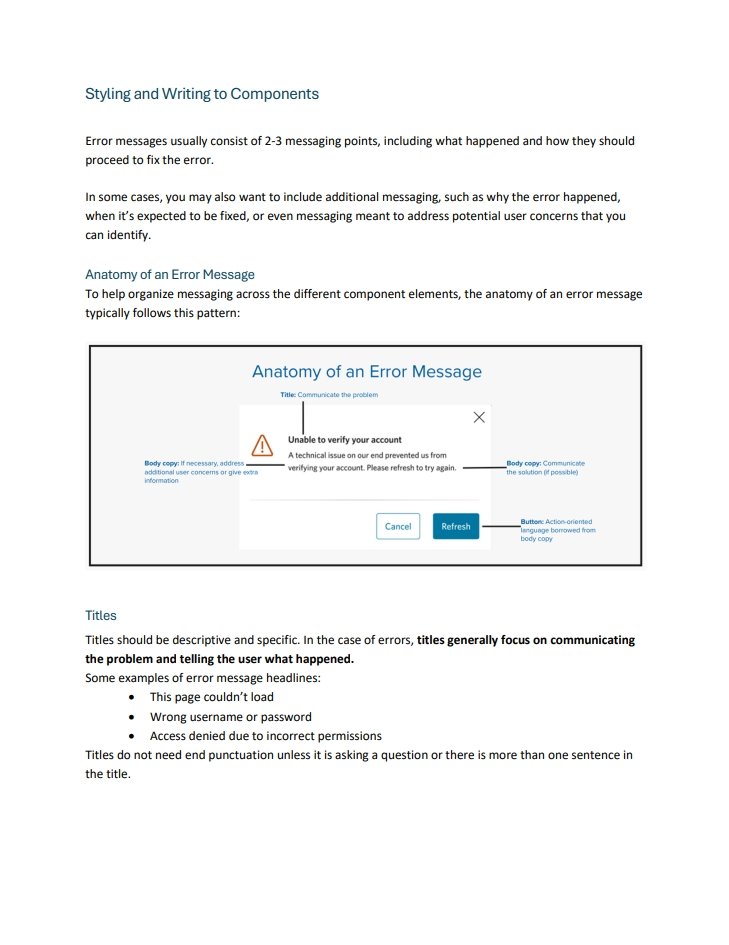
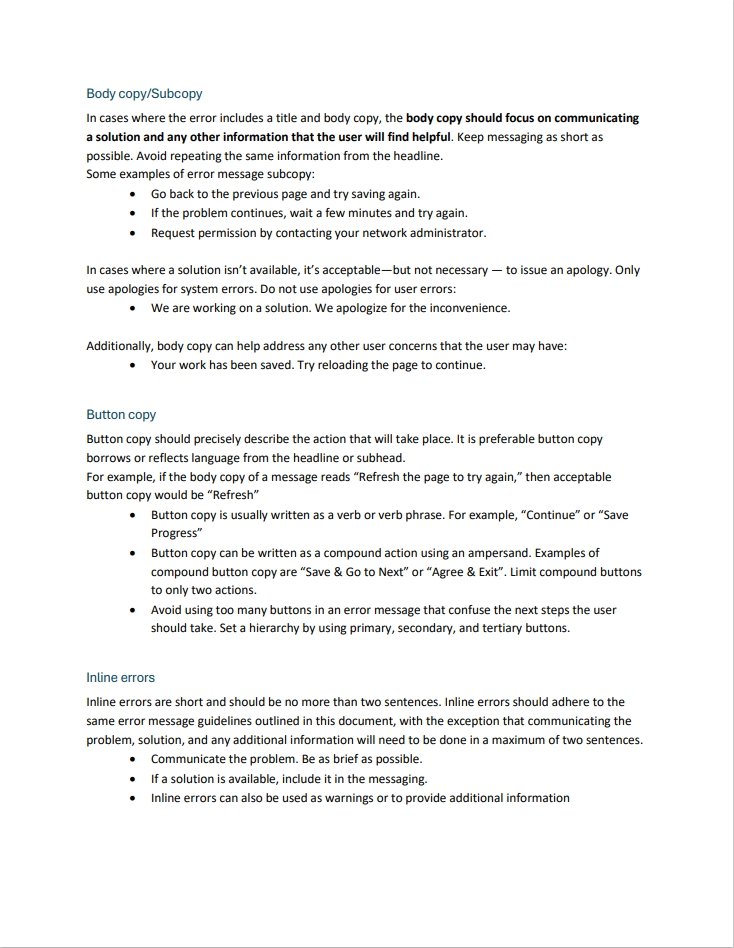
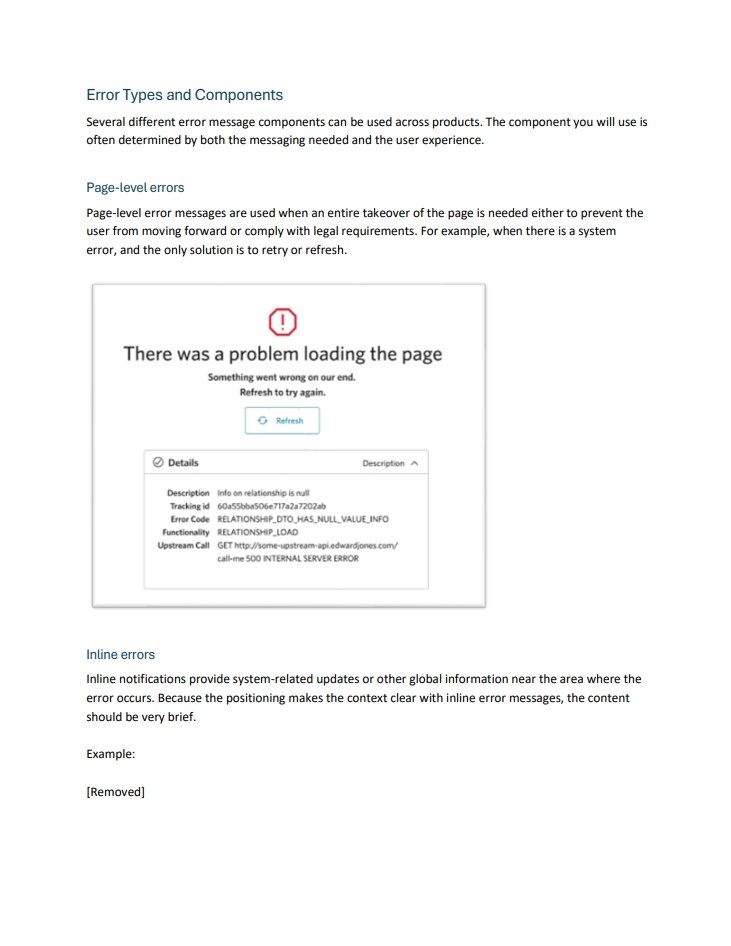
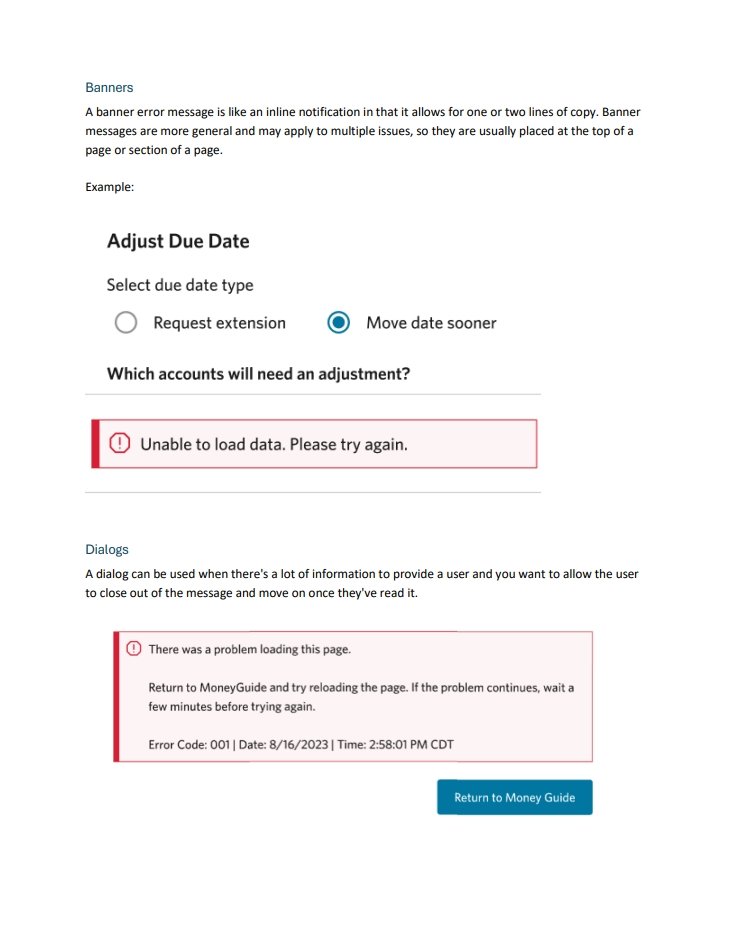
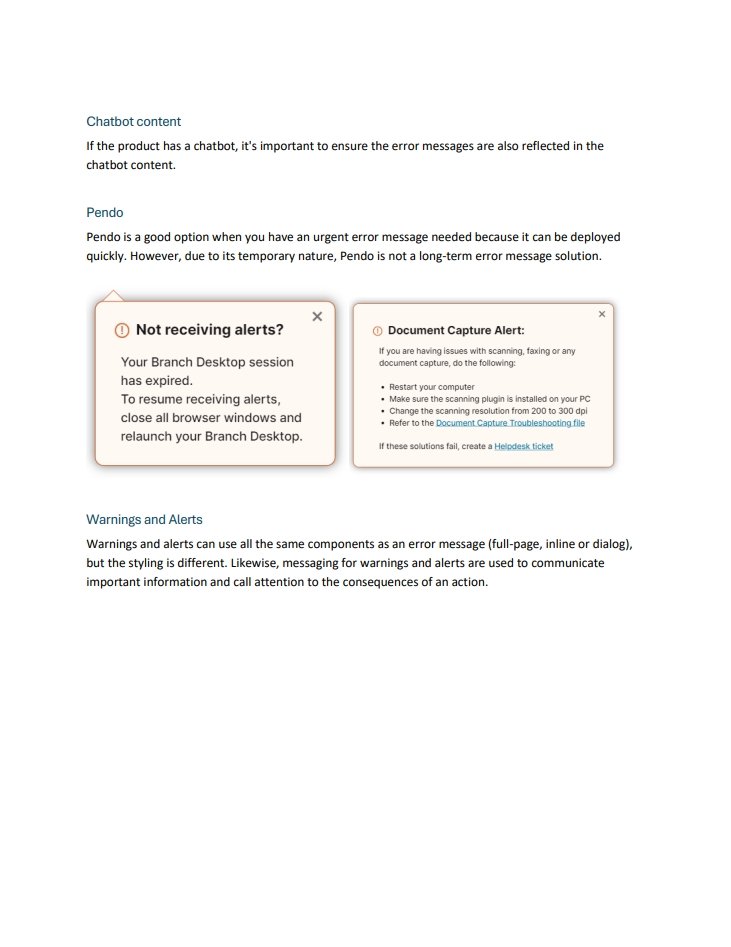
Impact
Creating these guidelines ensure that the client has a consistent, documented, and repeatable content strategy for error messaging that can be applied across all products, including those without content strategists.
The goals of the guidelines are to:
Outline how to write messages that are clear, concise, and communicate both the error and how to solve the error to users
Increase consistency in error messaging across products and applications, ultimately increasing user confidence in completing everyday tasks and learning new features
Get users the information they need within the experience, preferably eliminating a call to help desk and resulting in time/cost savings
Additionally, when writing the guidelines, the team lead and I identified additional resource needs that could benefit the UX team. The team lead went on to draft a playbook aimed at product owners on how to organize teams undertaking large error messaging rewrite projects. I helped organize a Database of Commonly Used Errors, in which all the content strategists contributed pre-approved error messages that were published to the client’s design site. The database is meant as a plug-and-play solution for product owners and designers to further promote consistency around the most common errors.